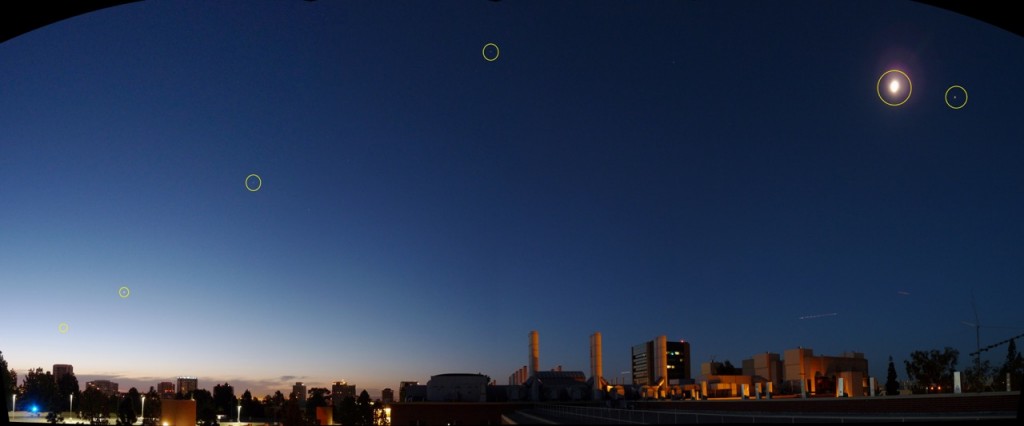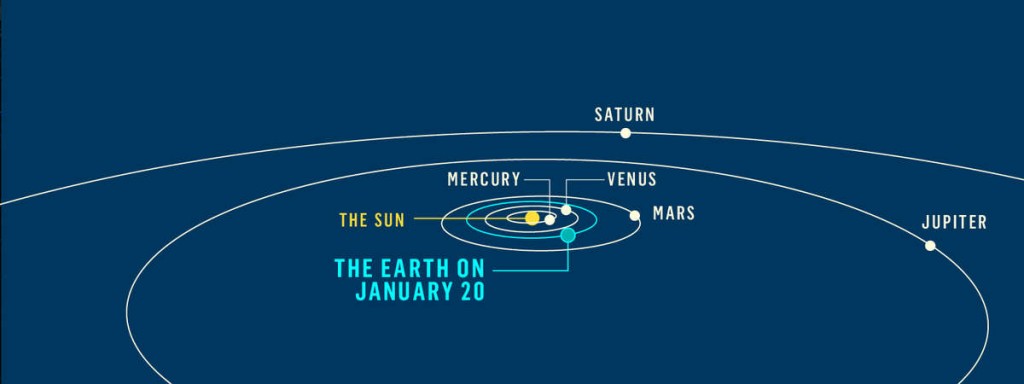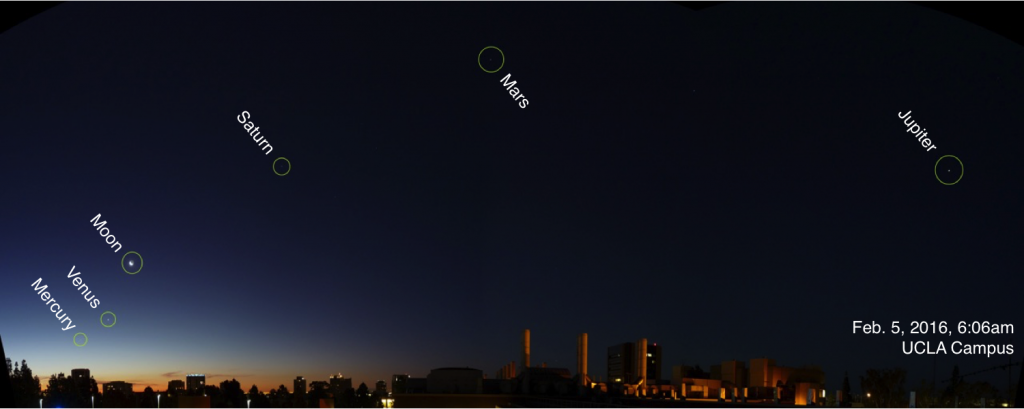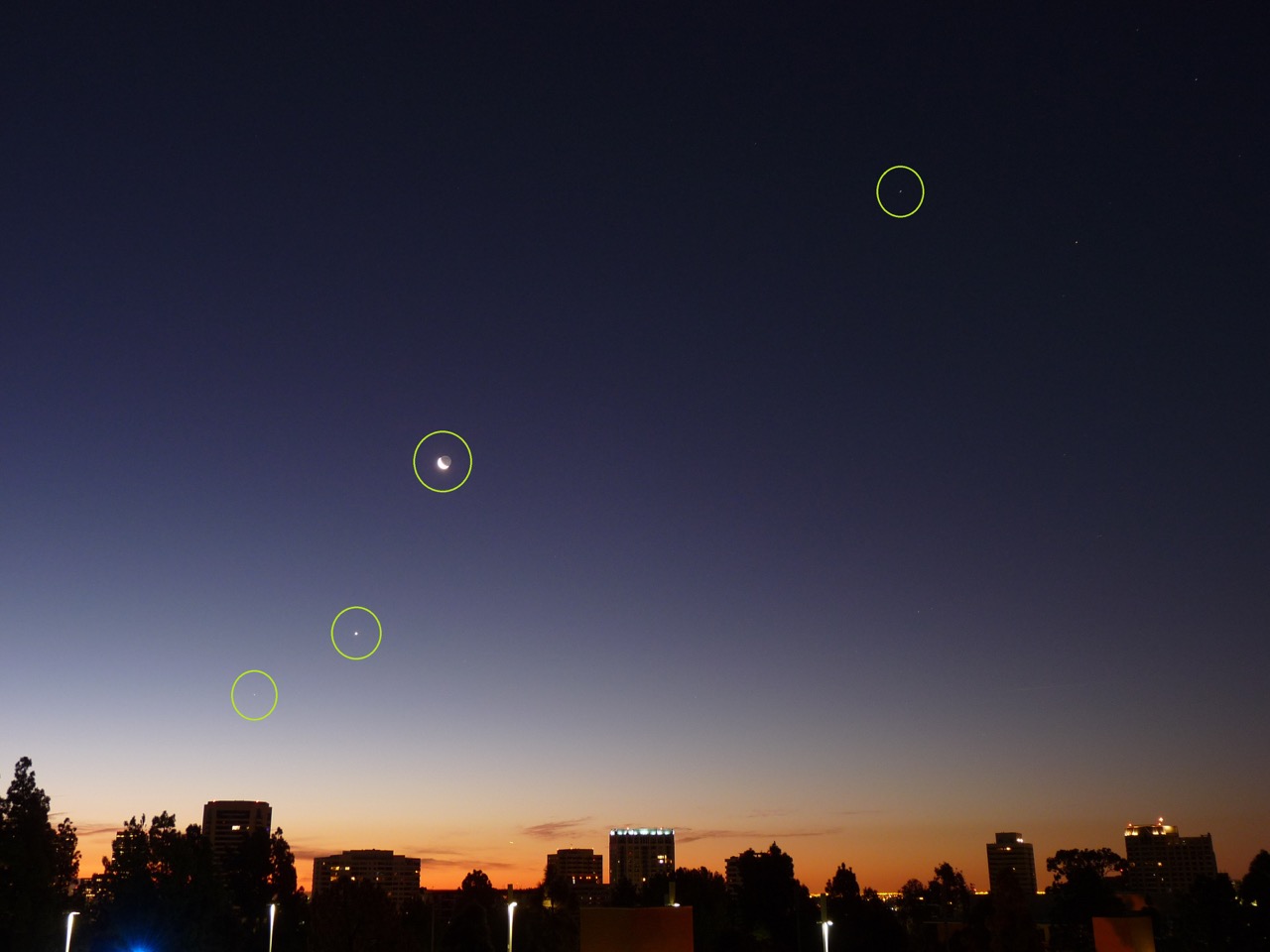
Late January and early February have provided spectacular views of the planets in the early morning sky. It is the first time that the bright planets that can be seen with the naked eye have been simultaneously visible since 2005. In their outward order from the sun, the five bright planets are Mercury, Venus, Mars, Jupiter and Saturn. They are visible because they are large and relatively close compared with other celestial objects like stars. Their surfaces and disks reflect sunlight and shine steadily, compared to the distant twinkling light that emanates from stars.
Many of the planets are visible before dawn, however, it is only at twilight that you can catch all five planets because of their orbital location around the Sun. This is because of the planets’ relative positions in their orbits. Currently, all of the planets are located on the same side of the Sun (to the right when viewing the solar system from above), which means that as the Earth rotates they are all visible just before the sun rises over the eastern horizon. That means that the planets are also visible from almost anywhere on the globe, with the exception of the poles.

You can continue to see the planets in close to dawn until mid-February, and can take spectacular photos using a long exposure setting on your camera. The photos here are taken from the UCLA Campus, taken by UCLA researcher James Weygand. If you look very closely, you can see a sixth planet (hint: the photographer is standing on it!). To see more photos like this from around the world here: EarthSky.

Follow Iplex

